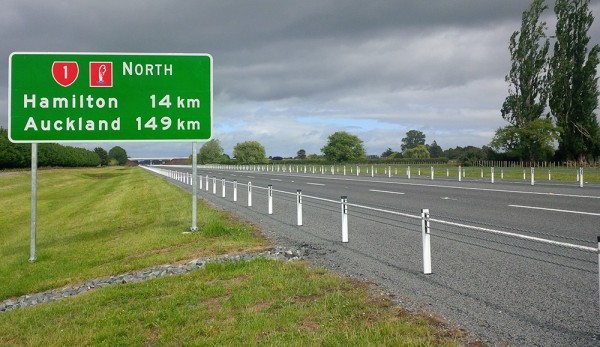Potential serious injury and death has been prevented at least 48 times in the year since the Cambridge section of the Waikato Expressway was opened.
 NZ Transport Agency figures show the flexible side and median road safety barriers have been struck 48 times. This figure is expected to fall substantially when the final asphalt surfacing is complete and audio-tactile line markings, also known as rumble strips, are added.
NZ Transport Agency figures show the flexible side and median road safety barriers have been struck 48 times. This figure is expected to fall substantially when the final asphalt surfacing is complete and audio-tactile line markings, also known as rumble strips, are added.
The Transport Agency’s project delivery manager Peter Simcock says the flexible road safety barriers are highly effective in reducing deaths and injuries for all types of road users, including motorcyclists.
“The flexible road safety barrier cables flex on impact slowing the vehicle down and pushing it back into its lane.
“We suspect many of these strikes on the safety barriers are caused by fatigue or inattention, and putting in the rumble strips is expected to reduce strikes and other potentially serious incidents,” Mr Simcock says.
There is solid evidence to show that assumptions that flexible safety barriers have a ‘cheese cutter’ effect and increase risks for motorcyclists are unfounded.
The evidence (referenced below) shows the opposite – that installing flexible road safety barriers can have a beneficial effect and actually reduce motorcycle casualties.
This is because motorcyclists are more likely to survive an impact with a safety barrier than a crash with roadside hazards such as trees, poles and oncoming vehicles.
The final seal is currently being applied with the section closest to urban Cambridge completed last month. Rumble strips can then be added. Contractors are now at the Tamahere end, with the whole 16km of the section likely to be completed in March.
The final surfacing is typically placed about a year after construction is completed and the road is opened to traffic.
The Cambridge section opened last December, producing peak-hour time savings of up to 23 minutes for a daily return journey between south of Cambridge and Hamilton.
Latest traffic monitoring shows the northern part of the Cambridge section is used by about 22,000 vehicles a day and about 14,000 on the central section, with 7500 coming and going on to the old SH1 past the velodrome.
Link to research and other information: https://www.nzta.govt.nz/roads-and-rail/road-engineering/road-safety-hardware/flexible-road-safety-barriers(external link)